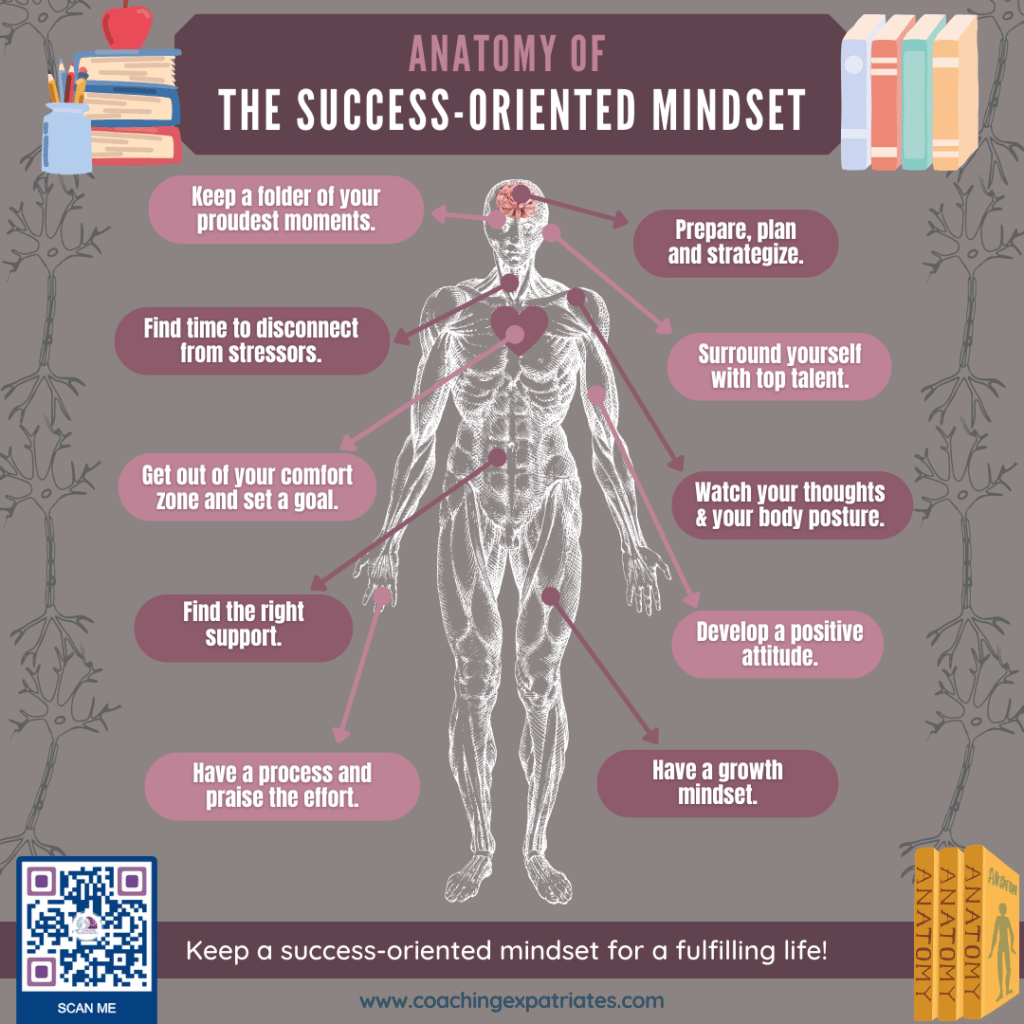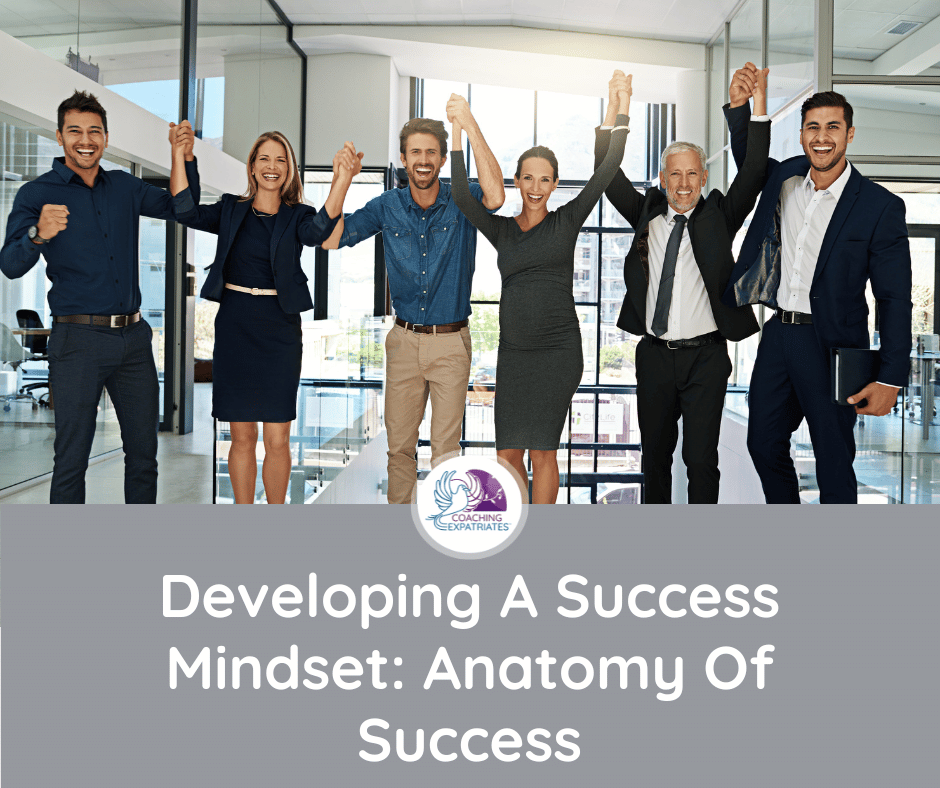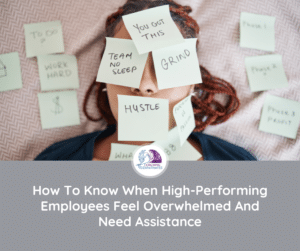Being successful means different things for different people. That’s why one may think the success formula actually doesn’t exist. Except that it does. It does not look like an Einsteins’ complicated formula, though. Instead, it consists more of a success mindset. Developing this success mindset requires you to understand a bit of the anatomy of success, which is what we’ll explore today.
Whatever you want to achieve, developing a success mindset is key for your goals and, ultimately, for your success.
Why Mindset Is Key To Success?
What if I told you that how you look at things can change how you behave and lead you to different scenarios in life?
Well, that’s exactly what researchers found. Researchers have found that when people think about success, we can view things in 2 different ways or with 2 different “mindsets.” One is the fixed mindset, and the other is the growth mindset.
The fixed mindset is the type of thinking that sees success as binary: either you fail or succeed at something.
The growth mindset is the thinking that views success as progress in time, where failure does not exist, only learning and making progress.

Sounds like a “New Age” kind of thing? It does, indeed, but it’s far from it. It’s a difficult mindset because it not only requires clear goals but also individuals to set proper metrics and tollgates to measure progress over time. This means it requires a lot of consistent focus and self-discipline.
Why Mindset Is Key To Success?
Well, you don’t have to be a mind-reader to see where this is going. Developing a success mindset needs you to use the growth mindset.
“Growth mindset” is a term originally coined by Carol Dweck. In her book, “Mindset: The New Psychology of Success,” she explains the 2 types of mindset and shares much of the research done in this regard.
The research found that people with a growth mindset believe that intelligence and skills in any field can be developed through effort. Everyone can nurture their abilities and grow their skills. The opposite of the growth mindset is the fixed mindset, which believes intelligence is innate and either you fail or succeed at things. They look at failure as an assault on who they are as a person.
I can’t say I don’t relate to the fixed mindset. There were many times in my life when I failed and felt terrible about it as if I was lacking as a person. I did not even consider the fact that I could try again or new things and still see success at the end of the road. What counted was the failure in front of me, and this is far from having a success mindset.
Developing a success mindset is ultimately an effort to develop a growth mindset.
You see, things take time, effort, planning, and strategy to succeed, therefore, having a growth mindset improves the likelihood of succeeding, as it will allow us to persist and be resilient in the face of challenges and bounce back quicker whenever difficulties happen.
When having a fixed mindset, though, challenges and hurdles put us down because things are seen from a binary position: whether you did it or not. Developing a success mindset is almost impossible in these circumstances because failure means the end of the road.
The truth is that the end of the road is an illusion. Like the spoon, “there is no spoon.” (a famous quote in The Matrix).
How Exactly Does A Growth Mindset Affect Success?
Developing a success mindset based on growth can affect your success because there is never an end to your road. When you view things as a journey, you behave differently because you aim for the future but focus on the present. This also means that because you behave differently, people around you will react differently as well.
Let’s imagine 2 different scenarios. You are studying to pass a certification program. Your end goal is to get your certificate and write it down in your resume. You go to a prep school with a cohort of other students who also want to pass this test. The test happens 3 times per year.
On your first try, you did not pass the test, but your scores were significantly improved compared to the first mock exam before you started studying for it.
In scenario 1, you meet the other cohort students for a happy hour, and everyone is talking about if they passed the exam or not. When they ask you, you say, “I failed, unfortunately.” In response, you hear things like, “oh, poor thing, don’t feel sad. So and so did not pass as well.” Maybe you might even hear micro-aggressions from someone who passed, like, “yeah, passing this exam is only for very smart people.”
Would you want to be in this scenario? Well, I’ve been in this scenario once, and it’s not fun. From people being condescending to passive-aggressive, it’s not nice at all.
In scenario 2, you also meet the other cohort students for a happy hour, and everyone is talking about if they passed the exam or not. This time, though, when asked if you passed, you say, “Not yet, but I am almost there! I’m missing only 10 points.” You might hear reactions like, “Oh gosh! That was so close! Yeah, if you cram it a little more before the next test, you’ll surely make it!” Your comment implies that you do feel the frustration (of course), but you also feel confident that it will soon happen. It also suggests you’ll try again.
You see, the way we think affects the way we behave. And the way we behave will affect our surroundings and the people around us. It’s that simple. Developing a success mindset means understanding success’s anatomy, so your thoughts will prompt the right behaviors.
How Do I Know I’m (Not) Developing A Success Mindset?
Brilliant question! That’s a fair question that gets asked often. How exactly can we spot if we have a success mindset?
Before sharing some metrics you could use, I will already tell you that the chances of you having a fixed mindset instead of a growth mindset are pretty high. Therefore, possibly, you are far from fully having a success mindset.
And that’s because our society raises us to have a fixed mindset in the first place. We are raised to be high-achievers and achieve things. Either we achieve, or we don’t. Our efforts are never praised. Instead, our results are, and we might fall prey to the high-achievers’ curse.
Think back to school. If you studied 100 hours or 1 hour before the test and got an A, you were praised for the A, not for the effort you put into it.
My dearest mom, who is no longer with us anymore, used to say, “you study to learn, not to pass a test. No one can take away what you learned.” Today I can see what a wise point of view that is. Indeed, certificates can be revoked, changed, extinguished, or deemed unnecessary. You can lose your credentials, but you cannot lose what you learned. That’s definitely a growth mindset.
Having said all that, I’d like to share with you 10 things you should pay attention to in your current behavious that could tip you off if you have a healthy success mindset. You can use them as metrics to evaluate how well you are doing towards this goal.
1. Lacking The Act Of Acknowledging
If we can’t even realize our small wins and acknowledge them, how can we even see any progress? When we forget to acknowledge and celebrate the small things, this is an excellent indication that we have a fixed mindset and are thinking things through a binary lens – succeeding or failing.
2. Overthinking And Relying On Assumptions
If you are anything like me, you overthink stuff. I bet even Buddhist monks would overthink stuff if they didn’t have an intense regimen of self-discipline and mindfulness training. Overthinking often goes hand in hand with making assumptions and spiraling into a web of worries and fears. We should worry about things when we have the correct elements to take action on them. Worrying about things we don’t have control over is useless and will hurt our physical and mental health. That’s why many executives hire executive coaches to help them bounce back ideas and act as sounding boards when problem-solving high-stakes situations.
3. Self-Judging
If you have the terrible habit of putting a lot of pressure on yourself and judging based on this pressure, you are far from developing a success mindset. At least a healthy one. This item is the one I have the most challenging time with, and most of my clients do as well. Self-worth sentiment is not something that comes easy to most people, and you should not judge yourself for it. Instead, work to develop it. Self-worth is associated with high productivity because it sets the right stage for developing a success mindset.
4. Winging Instead Of Planning
Some people love to plan, and others love to live with the flow. I don’t think it’s wrong to live with the flow and be surprised by what life throws at us. When stakes are high, though, that’s not the best approach. Planning means we are using brainpower at the right time and space to prepare and strategize about a goal. When we engage the plan, we will direct all our brain power to execute instead of diving our attention between figuring things out along the way and execution.
5. Not Setting Reasonable Goals
The world is inundated with all sorts of gurus, coaches, and training that teach how to set goals. Some of them are really cool and really preach good stuff. None of them, though, will build on our behalf the self-awareness of what is reasonable to us. That’s on us. It’s our duty to implement what we learn and develop this self-awareness. “Reasonable” is a keyword here because there is no success mindset if you set yourself up for failure from the start with unreasonable goals. If you have the right (and reasonable) goals and the right belief system to propel your performance, you have concrete steps into a success mindset.
6. Lacking A Reward System
When you read this topic, what came to your mind? A reward for achieving your goals? This strongly indicates that you – like 90% of the world – have a fixed mindset. A reward system must be set for our progress, not only for reaching our goals. Our small wins deserve rewards as well! Framing your success mindset for abundance is also key to a healthy reward system.
7. Not Paying Attention To Body Posture
My body posture tends to curl whenever I am upset or sad about something, and I look like a 90-year-old lady. Whenever I am overthinking, I play with my hair. Whenever I am nervous, I hold my breath or use very shallow breathing. This might sound strange, but our thoughts affect our body posture, and our body posture puts more fuel to that kinds of thoughts. To break this loop, we must use a positive body posture.
8. Lacking A Positive Attitude
When I was a young auditor, my bosses usually said during performance reviews that they liked that I had a positive attitude. One day I asked them what they freaking meant by that. What is exactly a positive attitude? They said, “it’s a can-do attitude.” You see, sometimes we don’t want to commit to something because we think it’s unlikely to work, but that does not mean you cannot have a “can-do attitude.” A positive attitude is not necessarily related to achieving something but to trying or exploring something that might or might not lead to your goal. That’s very aligned with a growth mindset. Each exploration, experience, and people we meet are miracles in our existence and have a reason to be part of our progress.
9. Not trying And Not Trying Again
How many times do you need to try something before you start to get the hang of it? How often do you need to try something you can’t nail before you decide to quit? There is a saying that you only fail once you decide to quit because you’ll never give yourself the chance to succeed. I think we should keep trying things until we see something is unreasonable. When we realize that, we are not quitting. We are changing gears, that’s all. During the course of our experimentations, we will sometimes feel that we are making a “negative progress” and feel discouraged. Sometimes, though, this is life making room for our giant leaps.
10. Wasting Time On The Wrong Things
What’s your relationship with your time? My relationship with time is that every single second of my time must be spent on something that will make progress towards a goal. Does it sound extreme? I don’t think it is, though. Spending time on things unrelated to any goals means we are losing our time or we don’t have our goals straight. “Don’t you watch Netflix, for God’s sake?” – you might ask. Of course, I do! One of my goals is to “do something fun and relaxing, at least once, daily.” Netflix can fall into that category. But sometimes it doesn’t. Every single waking moment of our lives, we should ask how spending time doing something will serve us. We don’t have forever, you know. Our relationship with time must be considered something precious.
A Process For Developing A Success Mindset
Now that you know how to spot if you are right on track or not for a success mindset, let’s teach you how to develop this path to track. Developing a success mindset is not necessarily easy because it involves a lot of self-discipline and self-awareness, but it’s doable and enjoyable. If you are having difficulty implementing this, consider hiring an executive coach. Let’s start.
10 Steps For Developing A Success Mindset
STEP 1) Have a growth mindset
Instead of seeing things as a binary result, success or failure, think of failure as a learning opportunity instead of an assault on your pride. Here are some key phrases to help you with that:
- What did I learn from the situation?
- How am I growing?
- What could I have done differently?
Anatomy Of Success:
This step in the anatomy of success is equivalent to your skeleton and legs. They support you in everything you do.
STEP 2: Get out of your comfort zone and set a goal.
Put yourself in challenging new situations and reframe your mindset for abundance. Equipped with a growth mindset, you will view these challenges as learning and growth opportunities instead of the traditional binary “Failure or Success.” Talking about which, defining what success means for you, is critical. Success definitions vary from person to person. We might think that everyone aims for success by having a 6-figure income and a house in Aspen, but, in reality, everyone views success differently. Find yours so that you can adjust your goals and the measures that will support you in defining how close to them you are.
Anatomy Of Success:
This step in the anatomy of success is equivalent to your heart. It pumps energy and blood into everything that you do.
STEP 3: Prepare, plan and strategize
“Luck is preparation meeting opportunity,” said Oprah once. She is right. Preparing in a strategical way helps you plan goals, resources and actions ahead of time, mobilizing your brainpower to find the best solutions. When you do stuff and perform at work, if you have to divide your brainpower between figuring things out and making things happen, you have half the brain output for each. That’s not smart. When you plan things ahead, you allow yourself to use your full brainpower’s capacity when finally engaging that plan.
Anatomy Of Success:
This step in the anatomy of success is equivalent to your brain. The brain is the coordinator of all moves, thoughts, and behaviors. It’s essential in everything that you do.
STEP 4: Have a process and praise the effort, not the result.
Once you have a plan, it’s time to create a process. The process is how you will execute your planned actions, get the rewards for certain small wins, and measure your progress through metrics. If you don’t have a process with steps, rewards, and measures, you are doing things randomly, and random actions might give you underperforming results. Having an established process is crucial for developing a success mindset. At the same time, praising the effort and not the result is also vital. Try giving yourself rewards for your effort and see these as small wins.
Anatomy Of Success:
This step in the anatomy of success is equivalent to your hands. Your hands are responsible for executing many activities and getting many things done in your life.
STEP 5: Develop a positive attitude.
People can define positive attitudes in different ways. As I told you, my bosses back then described it as a “can-do attitude.” My take on a positive attitude is not being unrealistically positive about things but being willing to find solutions and ideas to improve things and take action. That’s a positive attitude for me.
Anatomy Of Success:
This step in the anatomy of success is equivalent to your biceps. Your biceps give you the strength and prowess to execute things.
STEP 6: Find proper support.
Be open to finding a mentor in your field, a coach for talent development, and the right training to develop your skills. Ensure your support curbs any internal judgments and criticism, as they are not part of the growth mindset. Your support must help you see and remind yourself of your worth and even help you create a self-worth mindset.
Anatomy Of Success:
This step in the anatomy of success is equivalent to your intestines. Your intestines absorb all the nutrients you consume to nurture your life and give you energy.
STEP 7: Keep a folder of your proudest moments.
Acknowledge the things you have already done and made you proud of. Even if they are not related to your current goals, remind yourself that you are a capable person. Listen, everyone is unique and capable. Yes, like anyone, I also have times that I think, “I’m so blah, I’m nothing special.” Look, we all want to be more special, remarkable, more likable. That does not mean we are not special, remarkable, and likable right now. Put together a small folder, scrapbook, dashboard, or whatever, to remind yourself of your happy and proudest moments.
Anatomy Of Success:
This step in the anatomy of success is equivalent to your eyes. Your eyes are your vision. Your vision is what drives your goals in the first place. Your vision is important to keep making progress.
STEP 8: Surround yourself with top talent in your industry.
When we surround ourselves with top global talents in our industries, we connect with bright minds that will fuel our vision, aspirations, and goals. Don’t fall prey to comparisons, though. You should surround yourself with high-achievers not to put you down but to push you out of your comfort zone and make you focus on the right things. When you surround yourself with top talent that shares your interests, you are much more likely to focus on these interests and push yourself to new limits. If you want to learn the piano but surround yourself with runners, you are much more likely to spend your time running marathons than going to piano concerts.
Anatomy Of Success:
This step in the anatomy of success is equivalent to your ears. Your ears are sensory organs that provides you inputs from the world. You want the right inputs to support you and your goals.
STEP 9: Find time to disconnect from stressors.
We all get stressed at times. There are many sources of stress in our lifes, including the stress that comes from within, when we worry and overthink. Finding time to disconnect from stressors is a break from the constant aggression that stress causes. If we don’t find time to disconnect, stress can become chronic and much harder to deal with. This can lead to underperformance, which might impact progress in anything we do.
Anatomy Of Success:
This step in the anatomy of success is equivalent to your neck. Your neck supports your brain and brainpower and gives you direction. If your neck is tense and painful, your brain will likely not work as it could, and you might sway in directions.
STEP 10: Watch your thoughts and watch your body posture.
Posture impacts our thoughts, and thoughts impact our body posture. We must be cognizant of our posture and thoughts, so we can perform optimally. Studies showed that negative thoughts and worries actually weaken our muscles. Images that are also associated with bad thoughts might also have the same effect. In another study, they tested how body postures reflected the subject’s perspectives and thoughts. They realized that positive body postures made people perceive things in a better light than when having defeated body postures.
Anatomy Of Success:
This step in the anatomy of success is equivalent to your shoulders. Things might seem gloomy and sad when your shoulders are down and defeated. Up your chin and straighten your shoulders whenever you start something new.

Final Thoughts On Developing A Success Mindset
The main takeaway you have to get from this article is that success should not be a binary result and it should be viewed as a continuum. Dweck suggests that if we fail to achieve something, instead of labeling it as “failure,” we should label it as “not yet.” I love that take because it implies that you’ll try again and make it happen at some point.
The myth says that Thomas Edison tried a thousand times before finally creating the light bulb. How much resilience, determination, vision, positive attitude, plan, process, and metrics did this guy have to achieve this, I wonder?
Indeed, developing a success mindset is not something easy that can happen overnight if you were indoctrinated with a fixed mindset since childhood. But through hard work and strategy, you can make it happen.
You can hire me as your executive and development coach if you want to go the extra mile when developing a success mindset. Have a free strategy call with me. We will go over your specific needs and define the best course of action together to help you create the right success mindset that works for you.
If you are interested in developing specific global leadership skills to improve your performance at work as a leader and manager, check out our online Global Executive Leadership Program. We go over all 4 success pillars of Global Leadership during 9 online modules specially meant for global leadership.
If you enjoyed this post, consider subscribing to our newsletter using the form below. We focus on providing good content to global leaders and executives who want to make impactful business decisions and be more inclusive and influential. We know your inbox is sacred, so we email just once per week, and we never sell your information. Trust is the basis of Global Leadership, and we fully honor it.







